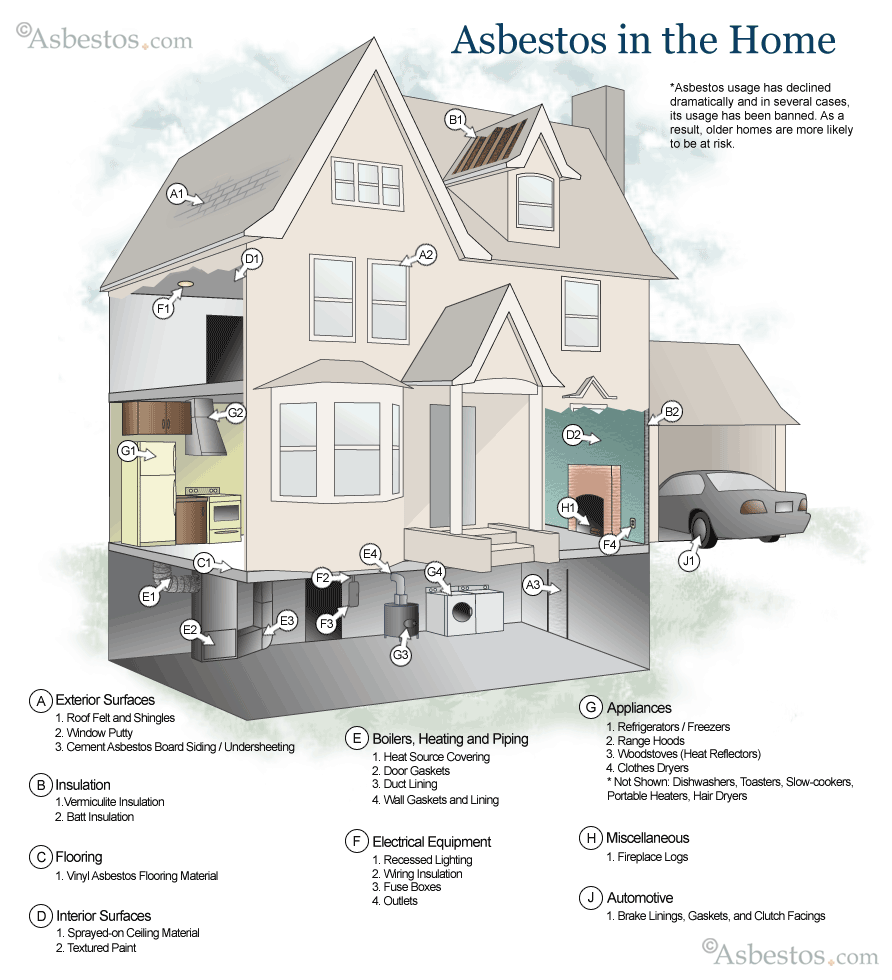One of the gentlemen at Asbestos.com sent me this article in hopes of educating people on the dangers of in-home asbestos.
One thing I found out last night, doing other research is that asbestos is in asphalt shingles as well.
The path to owning a home is an exciting time that will bring many rewards for you and your family. It will also require additional responsibilities. Used throughout the 20th century, asbestos became one of most sought after building applications in the world. The state of New York contains three naturally occurring locations of asbestos.
According to the Agency for Toxic Substances and Disease Registry, about 400 public facilities, job sites and oil refineries are still known to have asbestos exposure issues. These cities include Brooklyn, Bronx, Long Island, Manhattan, Albany, Rochester, Staten Island and others.
Potential New York home buyers and those remodeling older homes should know that asbestos exposure is easily preventable by taking simple precautions. Many
healthy, green alternatives now exist that make the use of older construction materials obsolete.
Homes and buildings built prior to 1980 still may contain asbestos-containing materials. Although not all asbestos can be toxic, damaged asbestos fibers can be released into the air, which can lead to the development of rare, but severe health ailments such as asbestosis and mesothelioma.
Mesothelioma treatment is limited to a handful of options, but new diagnostic procedures are being tested specifically for detecting diseases such as mesothelioma. The amount of asbestos-related incidents in the last century has lead to
mesothelioma lawyers advocating and protecting victims’ rights. The asbestos and corporate industries were aware of the health hazards involved with asbestos, but continued the widespread manufacturing of the substance anyways. Millions of people have been wrongfully exposed for financial gain.
If any asbestos is suspected, the best advice is to leave it un-disturbed. Touching or breaking it off may cause it to become damaged and release its fibers into the air. Sometimes the best action is no action. , a home inspector can determine the proper course of action. If asbestos removal is necessary, it must be performed by a licensed abatement contractor who is trained in handling hazardous materials. The
New York Division of Safety and Health oversees the abatement of toxic hazards such as asbestos during remodeling, reconstruction or demolition. They enforce state and federal laws regarding the safe disposal and removal of asbestos.
Many cities and states are implementing green strategies to reduce carbon footprints, save energy and maintain healthy homes. Many eco friendly alternatives exist that replace the need for asbestos. These include cotton fiber, lcynene foam and cellulose. Not only do these healthy substitutes provide the same qualities as asbestos, they can even reduce annual energy costs.
Conducting a study in 2003, the United States Green Building Council reported a savings of $50 to $65 for green constructed buildings. A water based spray polyurethane foam, lcynene is becoming a favorite for healthy insulation, containing no toxic components. These options allow for a safe, environmentally sustainable home, free of any health corroding materials.
Please look at this diagram closely - click on it to enlarge in a separate window. It will help you identifity where there are possible asbestos issues within your home. Understand that asbestos that is NOT disturbed will not harm you. It's only when it is dust or particulate form that it is so dangerous. 
Labels: article, asbestos, green, Homeowner, insulate


